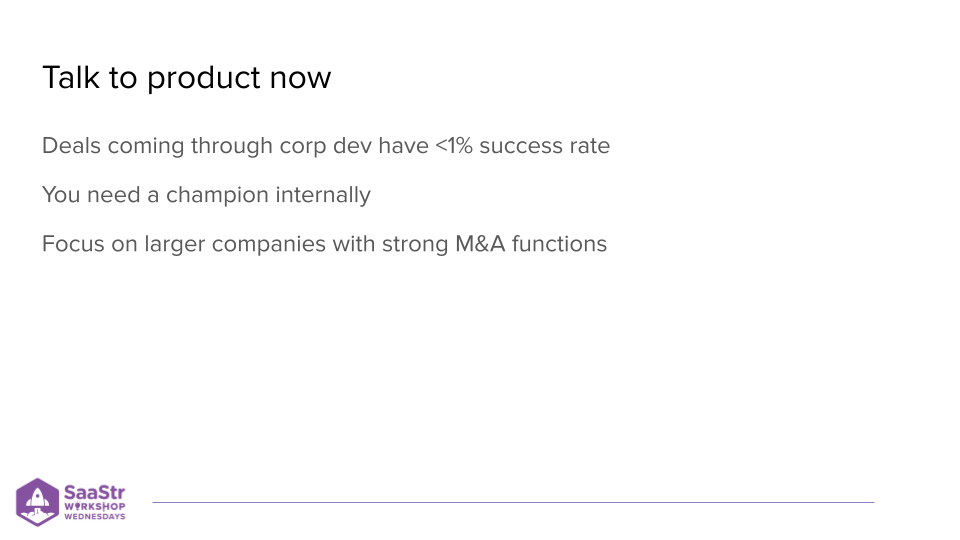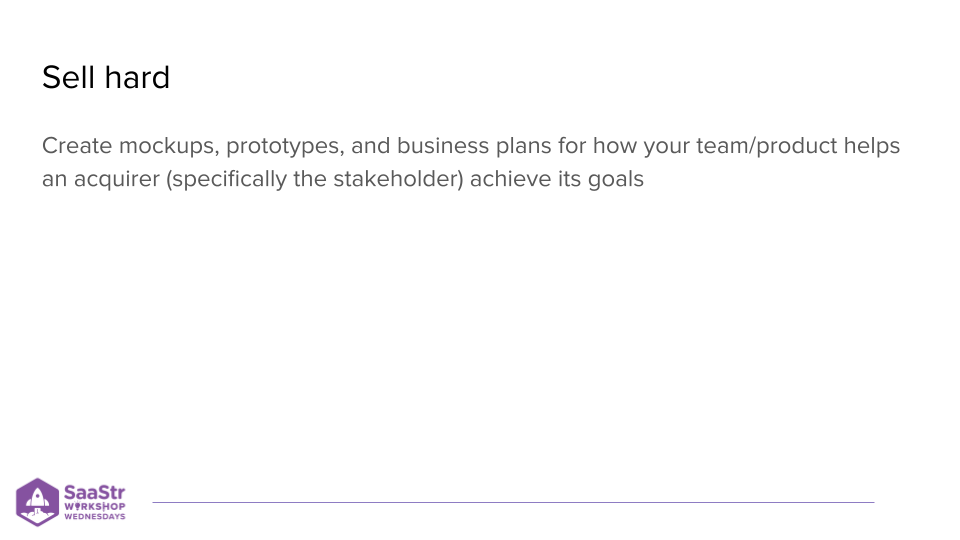Former member of the M&A team at Google, Brett Goldstein, now Founder at Micro and Co-Founder & CEO of Launch House Ventures, shares the nine things founders should know about getting acquired. It’s a common dream for founders to hope their startup be acquired one day, but what is a company, like Google, really looking for in their acquisitions? And what should all founders know about the process if the time comes?
First, there are three types of acquisition deals:
- Talent — To get the expertise on your team and more firepower.
- Asset — To gain certain assets like code, patents, data sets, etc, while leaving the team and often the company behind.
- Talent + Asset — Taking everything to expand the business or some core piece of the product. Or integrate the features into an existing product, which is an acquisition of the product.
Now, let’s look at what founders should know before, during, and after the M&A process.
Before the M&A Process
What should you do before you even have an M&A process? Brett breaks this up into three sections.
#1 Build a Great Company:
M&A is a bit of a black box, similar to a hiring process, but 10x harder. Not only do you have to pass the hiring interviews as a Founder, but everyone on your team does, too. Brett has seen deals where the founder and a couple of employees are great, but most of the team failed the initial interviews.
You have to be able to pass a technical review, do or build what you said you would, and pass diligence on usage and revenue. People lie about usage and revenue, which leads to a failed acquisition.

#2 Talk to Product:
Deals that go through M&A teams have an extremely low success rate — less than 1%. The reality is that the M&A team is just a team that facilitates the transaction and negotiates with you. The person who makes the decision is ultimately the product person.
Build relationships with product. Find people in your space and acquirers that are relevant to you. Focus on companies with strong M&A functions. Google was acquiring 40-50 companies, while smaller startups will be acquiring on a much smaller scale, if at all.
#3 Be Financially Viable
The more money you raise, the fewer options you have for an acquisition. Moreover, the larger your valuation and the worse your liquidation preferences are, the worse your financial opportunities are.
You only make money after your investors get their money back. For example, if a founder raised at a $400M valuation and got acquired for $300M, the founder gets nothing.
Of course, many acquirers will put things in place to ensure the founder is incentivized to take the deal and stay at the company, but it’s not the same as making that money for real with your equity.
Another aspect of being financially viable is keeping your books clean. Going through your finances and cleaning your books during a process is an easy way to slow down a process. And slowing down a process is an easy way to kill a process.
During the M&A Process
Now, you’re in the midst of a process. What are the three things you should do? Let’s find out.

#1 Sell Hard
You really need to convince the acquirer that your company is going to dramatically catapult their company and their personal objectives. You need to talk to product and find the stakeholder at the company that is most relevant to you. Figure out their goals and company goals, and create mockups, prototypes, business plans, and even real code to demonstrate why your company is going to be incredibly valuable.
#2 Play the Field
On the flip side, you should play the field. If you’re going through an M&A process, you should assume it will fall through. When one person is interested, and you have some sort of bite with a potential acquirer, start conversations with others, too.
Hopefully, you’ve been talking to product for a while, and it’s not a brand-new conversation. But the best bet is to speak to a lot of people at the same time.
Another important consideration that companies have made is to do fundraises at the same time as the M&A processes. This is great because it puts pressure on acquirers when they see a term sheet for the next round. If an acquirer is ready to buy now, they’d probably buy later.
#3 Keep It Quiet
When you’re negotiating, you want to keep it to yourself. Don’t say too much, even with your team. Don’t overshare because the team will start imagining the cars or houses they’ll buy and stop being productive. There are points in the process where you’ll have to loop people in, but you should avoid it until absolutely necessary. Don’t tell anybody you don’t have to.
After the M&A Process
You’ve nailed your amazing acquisition, and you’re so excited. What three things should you think about next?
#1 Get a Financial Planner
It’ll be the worst, most complex, and painful tax season of your life, so it’s good to start that conversation right away instead of waiting until the last minute. All those acquisition prices you see on social media and in the news may look like a lot, yet they also have strings attached, with most being tied to retention. Some acquisitions take all of your equity back and make you vest it over four years to keep you around.
#2 Hit Your Metrics
Another thing is milestones. If you’re looking to launch a particular feature in a product, they could tie your payout to the number of users of that feature. It’s essential to negotiate those hard and to hit those metrics because no matter how much the acquisition offer is, you don’t quite get it unless you hit those numbers.
#3 Get Back in the Arena
At Google, most founders left well before their vesting was up. It was about 2.5 years when most folks left. After talking to the founders, Brett discovered that they weren’t happy. As a founder, you go from being a wild animal, killing what you eat, and being in charge of your own destiny to being part of a massive company.
It’s a jarring experience, and many entrepreneurs are not big company people by definition. Brett’s best advice is not to fight it but to get back out there. It’s ok to leave money on the table. You’re a founder at the end of the day.
Key Takeaways
Before even thinking about M&A:
- Talk to product. Build relationships with relevant product teams, customers, and partners.
- Be financially viable. Don’t raise too much or at high valuations. Keep your books clean.
- Build a great company, hire well, write good code, and build a business that’s working.
During M&A:
- Sell hard. Ensure you’re creating mockups and prototypes and showing acquirers how valuable your company will be to them.
- Play the field, start a fund-raise, and talk to other acquirers simultaneously.
- Keep quiet with your team and other people for as long as you can.
After M&A:
- Get a financial planner to help you manage all of that money. Congrats!
- Hit your metrics. You won’t get a full payout unless you do.
- Get back in the arena if you want to. It’s ok to leave money on the table and do what you love doing.

